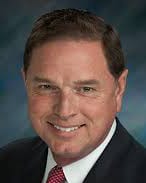
Longtime readers of this publication have heard us mention often the advice of measurement guru and PRNEWS contributor Katie Paine. One of her insightful observations is about the important of testing assumptions periodically. You think your company is known for its design excellence. Survey your audience. You might find, no, your designs are considered out of date and difficult to navigate. Your audience, though, considers your customer service top notch.
So, it was with our quick survey about coronavirus and PR. Conducted during the final two weeks of March, it burst several assumptions about how PR pros at brands, nonprofits and agencies are thinking at this moment.
In short, we found:
- Most PR pros feel it’s still a good time to pitch, even if the story is not related to the virus
- Emotion has emerged as a top-of-mind ingredient for internal and external messaging
- Emotion was not a top-of-mind part of messaging prior to the virus
- The financial health of PR firms is holding steady, for now
- Nearly 20 percent of companies lack crisis plans
- Over-communicating to staff rules the day
- Most firms are planning for the post-virus period
- Employee safety, not revenue generation, is the top priority for the overwhelming majority of companies
Revenue or Safety?
Looking at the last finding, about revenue generation not being the top priority, our survey of 215 mostly senior communicators (see chart 10, shows not even one-third say their company’s top priority is finding new revenue streams (see chart 1).
Instead, the overwhelming majority said “making sure staff members are safe and healthy” (77 percent) and “communicating regularly with customers” (67 percent) rule the day. Not even half (41 percent) said the top priority was “staying afloat in a decimated economy.”

CCO/Chief of Staff
Bell
For Robert Hastings, CCO and chief of staff at Bell (formerly Bell Helicopter), the responses make sense. “During times like these,” he says, “leaders – and their communications partners – should be focusing on what is most important, and that is people.”
Natasha Kennedy, global managing director of FleishmanHillard’s TRUE Global Intelligence practice, was “pleasantly surprised and validated that many respondents are concerned about the welfare of their employees right now.” She adds, “It’s ethical, humane and plain good business.” Communicators will be needed “to deliver on our short- and long-term goals.”
A former Assistant Secretary of Defense for Public Affairs, Hastings adds, “The health, safety, and welfare of employees is the most important responsibility of leaders.”
Economic Woes Lag Survey

Global MD
FleishmanHillard
The last two responses (staying afloat and finding new revenue) can be seen several different ways. One is that the significant economic damage related to coronavirus was not fully understood when our survey was conducted.
The Labor Department reported April 2, just after our survey closed, that nine million people filed for unemployment insurance during the last two weeks of March. A normal scenario has about half a million people filing. The jobless rate is estimated at 13 percent, higher than at any time since the Great Depression.
In addition, some states had not shut down. Understandably, respondents had yet to absorb the virus’s full impact on economic activity.
A second interpretation harkens to traditional PR. Communicators, this group argues, aren’t supposed to find new revenue streams. They’re not an integral part of the sales funnel. While this is antiquated thinking, it might explain some of the response.
Another interpretation is that companies are acting differently than they would during business as usual. Instead of looking for new business, they are attempting to eke through this difficult period. They’ll do that by serving customers as best they can.
In addition, as Finn Partners’ managing partner and global health lead Gil Bashe says, during normal times, companies want to be perceived as smart and competitive. In this environment, though, being smart and caring are what’s important. In other words, provide as much counsel, care and advice to customers, without selling them too hard.
For example, media companies such as the NY Times and the Washington Post have taken down their paywalls for coronavirus coverage. Similarly, HBO is offering 500 hours of programming free. Several cable operators are offering Wifi hot spots free to the public.
Media relations guru Michael Smart agrees. He believes smart companies, in PR and out, understand cash isn’t flowing. Selling is less of a priority. Being seen as a company that cares about customers, providing knowledge at little or no additional cost, is paramount and will pay dividends after the virus has gone, he says.

Source: PRNEWS, March 2020 (215 respondents)
Pitch or Not?
Chart two, about pitching or not pitching non-virus-related material during this moment, is intentionally controversial. As you see, a slight majority (57 percent) are counseling that it’s OK to continue pitching non-virus stories “where and when appropriate.”

AVP, Media Relations
Barclaycard
“That blew my mind,” says Nicole Dye-Anderson, AVP, media relations and partnerships at Barclaycard. Her concern is that some companies are pitching stories that are too sales-y for this moment. “It’s almost tone-deaf,” she says.
On the other hand, she’s fine with HBO’s #StayHomeBoxOffice effort, that includes the aforementioned 500 hours of free content. “HBO’s encouraging people to stay home. That’s helpful and the hashtag is clever. It doesn’t seem too self-serving,” she says.
During the next 3 to 9 months, Dye-Anderson believes, companies “will be judged” by how they react now to the virus. What emerges after might include new ways to do PR, she adds.
Chart 3 is a glass half full or half empty. Some argue the responses show communicators are getting that coveted seat at the table: 73 percent said they have “plenty” or “adequate” time with the C-suite. It’s concerning, though, that nearly one-third (27 percent) had “very little time” or “no time at all” with leaders to discuss objectives.
It’s not a secret that there’s a lot of communications advice floating around during the pandemic. People are worried about many things, including their and their family’s health, their job/health insurance and future.

Useful Over-Communications?
A phrase that’s almost become a buzzword is over-communicate with staff. The survey shows it’s popular. Nearly 80 percent said they’re over-communicating (see chart 4). The question: Are communicators sending employees useful, authentic messages or long-winded speeches from the C-suite, filled with jargon and lacking transparency?
More communication and more human communication is expected during difficult times, says Hastings of Bell. “Today’s crisis is a human one, and it requires a human response.” People are looking for answers “in an overload of conflicting and confusing information.”
Since coronavirus is a crisis without a clear end, Hastings says staff are seeking “guidance in the face of the unknown. They are looking for strength instead of fear.”
It is imperative, he adds, that leaders be visible, informative, compassionate and authentic at this time. Leaders, he says, “will make the difference between organizations whose employees remain engaged, motivated, and productive.”


Softer Messages
In addition, 68 percent of those who are communicating more with staff are including what can be called softer messages with the usual business updates (see chart 5). These softer messages include stress reduction tips and working from home ideas. Note that just 18 percent are sending messages emphasizing new revenue streams. This seems to track with the low response to the need for revenue creation seen in chart 1.
Chart 6 was a surprise. While we expect the emotional content of messaging to be high at this moment, and it is, at 69 percent, we thought more PR pros would have chosen “we are messaging normally in that we always considered the emotions of our customers and consumers.” Only 15 percent chose that response.
That surprised Dye-Anderson of Barclaycard, too. “There’s got to be an emotional side” to every story, she says. “That’s one of the things that makes a story newsworthy,” along with elements like timeliness. By the same token, she’s surprised that just 69 percent said emotional needs are top of mind in their messaging.
Chart 7, which was for agency communicators, either indicates that companies are hesitant to let go of their communicators—just 14 percent of agencies said “a lot of clients are leaving” — or, as we said about chart 1, the economic downturn was still in progress when the survey was completed.
The Crisis Conundrum
As with all these questions, chart 8 represents a snapshot in time. That’s why we asked if the pandemic has prompted companies to be more concerned about crisis.
As you see, 20 percent of respondents said they or those they represent lack a crisis plan. That’s what we’ve seen in our other surveys.
Kennedy was surprised 37 percent said they and their clients either lack a crisis plan (20 percent) or have no intention of updating their plan in light of coronavirus (17 percent). She thinks that’s a mistake. The pandemic, she says, will change “our prior ideas...of relationships.” This calls for companies to have crisis plans and update existing plans.


Plan Now
The question about crisis planning in chart 8 transitions easily into chart 9, where we find nearly half the respondents (48 percent) have a formal planning process for the post-virus world. Another 29 percent are planning sporadically, with about the same amount living day to day and not planning ahead. So, it’s about roughly 50-50, planning vs not planning. “I think the 48 percent who are planning are right,” Dye-Anderson says.
Fleishman’s Kennedy and Dye-Anderson admit plans created today for the post-virus world might need to change often. Still, Kennedy argues, planning helps organizations and agencies support innovation, which they’ll need to continue to serve key stakeholders.
Dye-Anderson takes a practical approach to planning. “What are your goals? How are you going to achieve them?”
CONTACT: [email protected] [email protected] [email protected]
